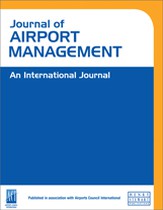Case study: Automated staff assignment with LiDAR tracking for security control at Munich Airport
Abstract
Munich International Airport (MUC) is a major European hub that, in 2023, served 219 destinations in 64 countries by 99 airlines. Like many airports throughout the industry, MUC has been affected by staff shortages and has explored ways to improve efficiencies while maintaining safety and security. This paper describes a project to automate a process for random assignment of airport staff and airline crews to alternative screening areas at a control point. The paper explains the approach taken from concept design through implementation, including the challenges faced, the lessons learned and ultimately, the success achieved.
The full article is available to subscribers to the journal.
Author's Biography
Robert Götze has 29 years’ experience in security-related tasks within the aviation domain. After having worked for Dresden Airport and Erfurt Airport, he joined Munich Airport in 2001. Since then, Robert has served in several capacities including dispatcher, quality manager and security manager/consultant. Currently, he is Senior Security Manager and representative of Munich Airport in the Airports Council Internation (ACI) security committee. He is also a certified instructor for security screening personnel and an independent validator. Robert has in-depth knowledge of advanced screening technologies and strong skills in the planning, coordination and execution of knowledge exchange programmes.
Andreas Hofmann has 20 years’ experience in the aviation industry, always exploring new technologies and innovations and how to successfully introduce them to meet business requirements. Andreas started his career at Frankfurt Airport and in his current role at Amorph Systems is responsible for sales and business development of the aviation product line.
